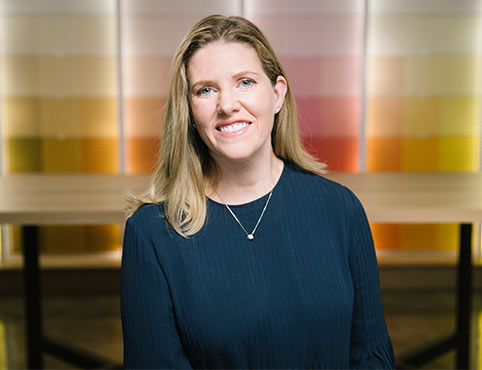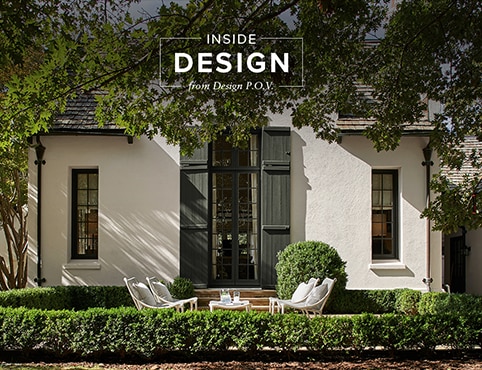Incorporating Lighting into Interior Design
Tracy Morris Sheds Light on the TopicRead What Tracy Morris Has to Say:
Tracy Morris, principal of Tracy Morris Design based in Washington, D.C. sheds some light around lighting and how she views it within her own design process.
“Lighting for me is always the foundation of our designs,” Morris shares. “If you have poor lighting, none of the amazing things you have selected for that space will be properly viewed. Lighting changes everything. So how do I figure out exactly what lighting is the best? I’ll talk about it from the top down.
“Firstly there is overall task lighting, which are referred to as high hats or recess cans. For their assigned work, these lights are bright, allowing for tasks to be easily accomplished, such as homework, work at night at the kitchen table or counter. But these lights can feel way too bright and can scare one straight out of a room. For me, my favorite lighting is ambient lighting. This lighting encompasses table lamps, wall sconces, and chandeliers—all on dimmers. This lighting should be placed throughout an interior space in what I consider a triangulated pattern.
According to Morris an example of this lighting pattern would be placing lamps on tables on either side of a sofa. On the other side of the room, place a chair with a reading lamp right next to it, its light gently illuminating the chair for reading. “Thus you create a perfect triangle of light, that fills the room with just the right light. There won’t be any light gaps. And it provides a welcoming warmth across the space."
Choosing the right light bulb color temperature
The topic of color temperature is one which Morris says is brought up all the time. “What color temperature do I select for my light bulbs,” is the number one query. The technology of lighting, and technology in general, has changed immensely and continues to evolve. Designers, homeowners and property owners alike are all playing catch up around what light bulb do I choose? With LED which is being used across the board, the range is from 2700K to 5000K; 2700 is the warmest light in an LED you can have, 5000K is the brightest, bluest, coolest light you select. Morris adds more clarity, “think about a warm lamp light as 2700K and a surgical center as 5000K. So when I look at lighting for residences, I stay within the 2700K to 3500K range.
“3500 indicates a natural sunlight. So when someone says they're going to put a daylight bulb in an LED in a residence, or you're recommending lighting to a client, and they want brighter, the 3000K to 3500K is the way to go. If you have a client that prefers what is my personal preference, incandescent light bulbs, that would equate to a 2700 Kelvin LED bulb, providing the warmest soft light. I recommend 2700 to all of my clients, reason being it is truly delivers a welcoming glow. You can dim it so it will allow it to come down even further, but it will not create harsh shadows or revert to a cool look within a room. If you are working with a more modern, contemporary residence with a ton of natural sunlight, a 3000K could be the way to go in the evening because all that natural sunlight is coming through the house on a daily basis. So in the evenings, it's nice to have something a little bit warmer so your eyes can adapt.
When looking at lighting for a residence, Morris counsels, “If you want to go with warm, and a great light to read a book by, I select a 2700 LED bulb. If you need a little bit more light for tasks, such as chopping vegetables or preparing a meal, a 3000 to a 3500 likely would be the choice.”
Continuing to share her knowledge around lighting, Morris added more details around what 2700K to 5000K is: “The K is the Kelvin, which is the color temperature. So if I'm speaking about a 2700K, that just means that it's the warmest color temperature. When you have your light bulb turned on, if it is a really soft glow, that is the 2700K; if it is a super bright, blue-toned light, that would be the 5000K. Kelvin is just the color temperature.”
LED vs. Regular Light Bulbs
“Questions abound about what is the difference between LED and the regular light bulb that was common years ago. And you can still get those ‘regular’ light bulbs. And when I say a regular light bulb, that means we're talking in terms of wattage. Normally in a bedroom, for example, or for a regular lamp used on a daily basis, you would use a 40 watt or a 60 watt light bulb. Those bulbs provide a fantastic soft light glow. If you have a reading lamp and you want a little bit more punch, then use what's called a three-way bulb which provides 50 watts, 100 watts, up to 150 watts. And that 150 watts will provide a lot of punch. I know I needlepoint all the time, so my lights and my lamps are full of three-way bulbs so I am able to see what I'm doing!”
For most residences, there are many areas that don't require full-sized light bulbs. Those spaces would include chandeliers over dining tables, potentially over your kitchen table as well, and sconces that are on the walls. Those bulbs would be what is called a candelabra base bulb. It is a small flame. Visually it can look like a candle flame. These come in a torpedo tip, which has no flame on its tip, or you can get a flame tip. Morris recommends the torpedo bulbs if you have little lampshades on any of your chandeliers, as they won't cause any tipping to one side or the other – that’s the secret to have little mini-lampshades sit straight on the bulbs.
These bulbs are also used for sconces. Sconces provide a little bit of glow in a hallway or as a nightlight. A candelabra base bulb can be used in these light fixtures as well.



Inside Design
Explore distinct design topics from the interior designers featured on this page.